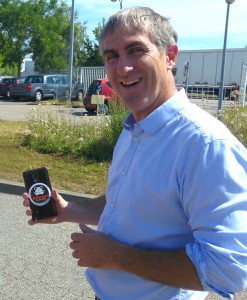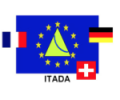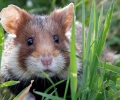Introducing hamsters into an urban periphery zone: meet the Director of a pilot site
13 novembre 2017 At the beginning of July, as part of the LIFE Alister programme, researchers from the CNRS (French National Centre for Scientific Research) released European Hamsters into an urban periphery zone, making this site the partner in a scientific study that will provide fresh information on the relevance of reintroducing the species, which is threatened with extinction, into urban periphery zones.
At the beginning of July, as part of the LIFE Alister programme, researchers from the CNRS (French National Centre for Scientific Research) released European Hamsters into an urban periphery zone, making this site the partner in a scientific study that will provide fresh information on the relevance of reintroducing the species, which is threatened with extinction, into urban periphery zones.
Simon Mallevialle, director of Strasbourg Europe industrial mail platform spoke to us.
What was your first meeting with the scientists like?
Mrs Pia Imbs is the mayor of Holtzheim, the town where our platform is located; she talked to me about the project being undertaken by the CNRS researchers. She was aware of La Poste’s commitment, and of this site in particular, to actions around sustainable development. Being very concerned by these issues herself, she wanted to host the study so was looking for a suitable area.
Initially, we were a little anxious about having European Hamsters on a site that dealt with so many tons of paper every day. Seriously! Introducing rodents amongst all the letters? Odile Petit, who is directing the study, reassured us on this point as European Hamsters are very timid and it is very unlikely they would venture as far as the buildings. As soon as this was made clear, our management committee listened attentively as the study, the context of LIFE Alister and the stakes of the European Hamster situation were presented to them. Afterwards we all collectively subscribed to the project! La Poste had to ratify the decision and then we had to clarify together how it was going to work.
Did the site need to be adapted?
Only very slightly. The CNRS dug out the beginnings of burrows in several places throughout our green spaces. We already had a managed mowing system but the researchers adapted the site by planting seeds to enrich our wildflower meadow. It is important to respond to the European Hamster’s dietary requirements. Nothing else needed to be changed.
The safety of the scientists particularly must be supervised. Our site is open 24 hours a day, with lorries constantly driving through. So, drivers must be vigilant and the researchers, who are concentrating on their observations, also have to be careful. Members of the CNRS team take over from each other at night to continue the monitoring of the experiment. We are not used to having such activities on the site.
How have the 300 or so people who work on the site reacted?
They are curious. We already have beehives and nesting boxes on our platform so they know of La Poste’s commitment to the environment. With LIFE Alister and Holtzheim Town Hall, we have created information boards (lien vers la série de panneaux) to explain what the study is about, how it will be undertaken and recommendations concerning the animals. They are wild animals that should not be touched or disturbed. I think this sort of action is beneficial for everyone.
You have a sticker on your cell phone case, what is it?
Ah yes! It’s Alister friendly. Our website and Holtzheim are both Alister friendly, this means that we support the LIFE Alister programme in some way.
It’s good, isn’t it?



